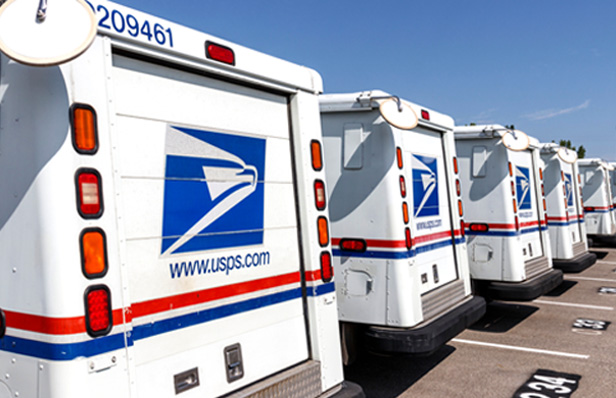News February 16, 2021
USPS Could Hike Rates, Slow First-Class Mail
The potential changes could hit businesses, including those in the promotional products industry, in the wallet.
The mail could soon get slower and more expensive.
Media reports indicate that the United States Postal Service will soon reveal a strategic plan that would increase postage rates and potentially as much as double the time it takes to deliver what’s currently a first-class category of mail.

U.S. Postmaster General Louis DeJoy has not officially unveiled the plan yet, but media outlets that range from NBC News to Fox Business have reported on it, with The Washington Post being the first to break the story.
DeJoy has responded to the reports to say that any proposed changes have not been finalized yet, but he acknowledged that USPS leadership has been working on a plan to revamp the organization following a $9.2 billion loss in 2020 that continued a decade’s run of annual losses.
“Over the past eight months, our executive leadership team has been working on developing a comprehensive 10-year strategy to address the serious, but solvable challenges of the Postal Service that commits to six and seven day a week delivery service,” DeJoy told NBC. “This work is not only needed, it is long overdue.”
According to reports, the strategic plan would make it so that first-class mail that’s currently delivered to local addresses in two days would now be delivered in three to five days. The category of mail includes letters, bills, catalogs, magazines and other envelope-sized items.
At the same time, the mail would become more expensive, with rate hikes reportedly planned that would affect both consumers and businesses.
“Now is not the time to aggressively increase prices when so many businesses are struggling and hanging on by a thread,” Hamilton Davison, the president of the American Catalog Mailers Association, told NBC.
The House of Representatives’ Oversight Committee is set to hold a hearing on Feb. 24 with DeJoy and other Postal Service stakeholders to “examine legislative proposals to place the Postal Service on a more sustainable financial footing going forward,” the committee said in a statement.
Speaking to The Washington Post, sources said that DeJoy’s plan would also have it so that first-class mail would no longer be delivered by plane, but rather through a network of trucks and distribution centers. The Postal Service spent $457 million on flying first-class mail in 2020, while it spent $314 million on shipping mail by truck, reports indicated.
While the Postal Service has suffered financially over the last decade amid the increasing digitalization of communication, the organization got off to a good start in its fiscal 2021, with Q1 revenue rising 11.1% year over year to $21.5 billion. Net income was $318 million.
The growth in the Postal Service’s first quarter, which corresponds to the calendar year fourth quarter, was spurred by a 25% increase in holiday package volume – a phenomenon that the shelter-at-home world of the pandemic drove. The Postal Service delivered 1.1 billion packages during the holiday season.
Still, the Postal Service’s largest sales category – mail services – declined in Q1. Marketing mail revenue was down 5.6%. First-class mail revenue dipped 2.7%. That happened as operating expenses increased, with associated costs up 5.3% year over year to $21.1 billion.
“While our positive financial results this quarter are certainly welcome, we continue to face systemic imbalances that make our current operating model unsustainable,” said DeJoy. “The economic impacts of the COVID-19 pandemic will continue to challenge the organization.”
The Postal Service does not receive tax dollars for operating expenses. It relies on the sale of postage, products and services to fund its operations.
